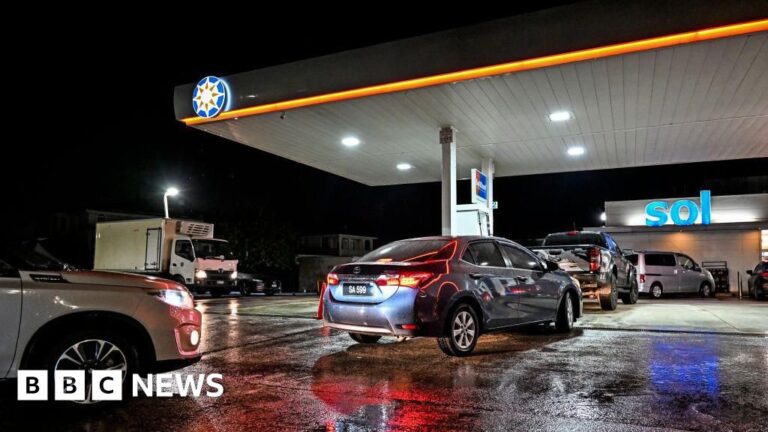Image source, Chandan Khanna/AFP via Getty Images
- author, Anna Fagie
- role, BBC News, Washington
-
Caribbean countries are warning residents to prepare for emergencies as a powerful and potentially deadly hurricane strengthens as it approaches.
Beryl, the first named hurricane of the season, is expected to make landfall on several islands late Sunday.
Forecasters upgraded the hurricane to an “extremely dangerous” Category 3, meaning sustained winds of 111 to 130 mph (179 to 209 kph) are expected.
The powerful storm is expected to strengthen as it approaches the Caribbean islands of Barbados, Dominica, Grenada and Martinique.
Across the region, people are boarding up their homes, lining up at gas stations to buy fuel and stockpiling supplies and water in preparation for the storm.
Image source, Chandan Khanna/AFP via Getty Images
In an address to the nation on Saturday night, Barbados’ prime minister urged residents to look out for friends, family and neighbours as the hurricane makes landfall.
Hurricane Beryl, which formed from a tropical storm on Friday night, is already packing winds of 115 mph and is expected to strengthen before reaching islands in the western Caribbean, forecasters said.
Researchers predict the storm will bring “hurricane-force” winds, “life-threatening” storm surges and heavy rainfall by the time it reaches the Windward Islands – Dominica, Martinique, St. Lucia, St. Vincent and the Grenadines and Grenada.
Beryl is the second named storm of the season, following Tropical Storm Alberto, which made landfall in northeastern Mexico on June 20. Four people were killed by the storm’s heavy rains.
The Barbados Meteorological Service issued warnings of power outages and flooding as the eye of the hurricane was expected to pass about 26 miles (45 kilometers) south of the island.
The storm is expected to dump up to 6 inches (15 cm) of rain on Caribbean islands, including Barbados.
In Barbados’ capital, Bridgetown, people are boarding up their homes and crowding into supermarkets and gas stations.
“We all need to remain extremely vigilant and take every precaution possible for ourselves, our families and our neighbours,” Barbados Prime Minister Mia Mottley said Saturday.
In St. Vincent and the Grenadines, Prime Minister Ralph Gonsalves urged supermarket and gas station operators to extend their opening hours ahead of the hurricane’s arrival, adding that emergency shelters would be opened on Sunday night.
Meanwhile, in a briefing shared online by the Dominican government, meteorologist Itoma James warned that the hurricane could be “catastrophic” and urged residents to prepare.
Forecasters say this year’s hurricane season, which runs from June 1 to November 30, is expected to be a busy one.
The National Oceanic and Atmospheric Administration (NOAA) issued its most shocking warning yet for this season, saying forecasters could see up to 25 named storms in 2024.
According to NOAA, between 8 and 13 of those storms have the potential to develop into hurricanes.
Between four and seven of those storms could become Category 3 or higher hurricanes, more than double the usual number.
Hurricane Beryl was one of the earliest storms warned about by NOAA.
Hurricane expert Michael Lawrie posted on social media that it was “astonishing” that a Category 3 or higher storm was being predicted “anywhere in the Atlantic, let alone this far east in the tropics” so early in the season.
“Through the first week of July, only five major hurricanes (category 3 or higher) have been recorded in the Atlantic. Beryl will be the sixth and fastest-growing hurricane in this eastern part of the tropical Atlantic.”
Hurricanes are classified on a scale of 1 to 5, with Category 5 storms being the most violent, with wind speeds exceeding 155mph (250km/h). The stronger the hurricane, the more destructive it is likely to cause.
The 2023 hurricane season had 19 named storms.

